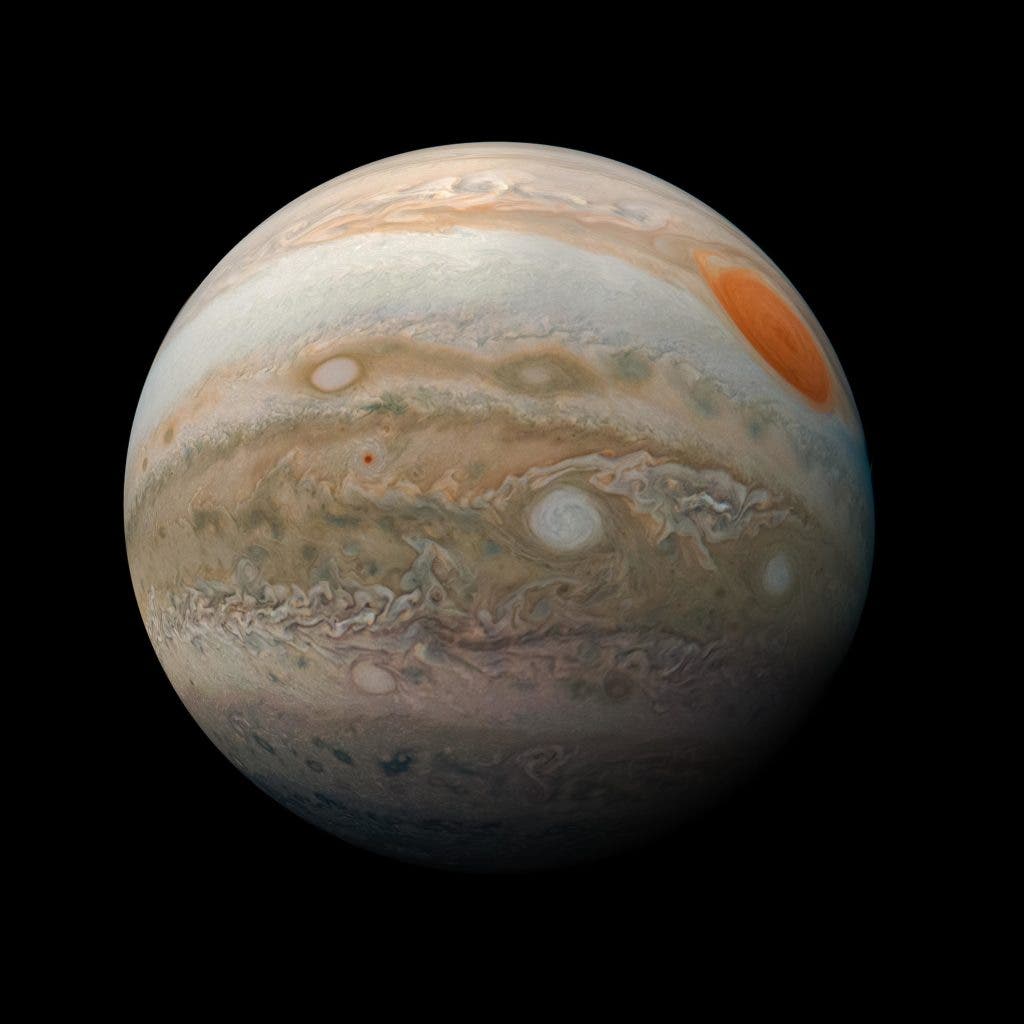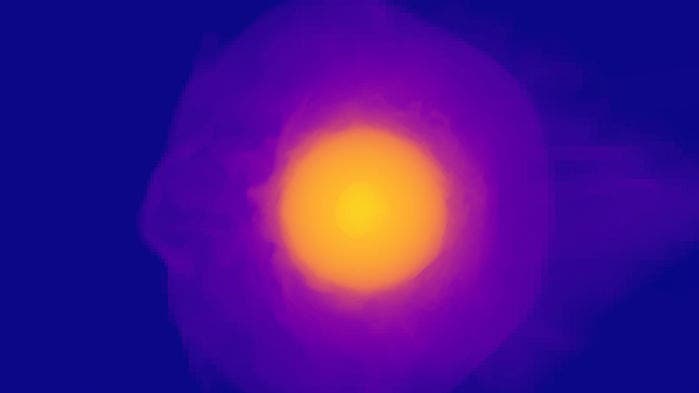There’s more to the gas giant than meets the eye — Jupiter might have had a violent youth which included a cataclysmic collision with another planet.

Researchers have been studying Jupiter for more than a century, but NASA’s Juno spacecraft enabled astronomers to understand the gas giant in unprecedented detail. Among the peculiarities of Jupiter is its fuzzy core.
Unlike the neat, almost-spherical core that astronomers would have expected, the planet features a fuzzy center — a bizarre mix of solid rocks and hydrogen gas.
“We have been studying the giant planets, particularly Jupiter and Saturn, since the time of Galileo, but we still don’t know exactly how they formed,” said Rice University astronomer and study co-author Andrea Isella.
Many astronomers believe Jupiter began as a dense, rocky planet. It slowly gathered a thick atmosphere from the gas and dust in the primordial solar system, growing larger and larger and forming what we see today. Meanwhile, others believe that Jupiter formed from a collapse of a fraction of the disk. In this case, Jupiter’s core wouldn’t have been rocky from the start, it would just have become increasingly dense as gravity dragged heavier elements towards the center of the planet.
However, neither of these theories do a very good job of explaining why the core looks the way it does today.

Instead, another possible explanation is a cataclysmic collision some 4.5 billion years ago with a planet 10 times the mass of the Earth. Back then, Jupiter would have been very young and probably surrounded by several protoplanets that are long gone. Isella and colleagues carried out computer models showing that in the event of such a collision, their cores would have combined and diffused after only 10 hours.
This would also help explain another dilemma regarding Jupiter: how its surface became so rich in elements such as nitrogen and carbon. After the collision, cooling and winds would have updrafted some of the fuzzy core upward, bringing the elements towards the surface.
“Models of such a scenario lead to an internal structure that is consistent with a diluted core, persisting over billions of years,” the team writes in the study.
Of course, while the collision idea fits the data very well and is very plausible, there are other mechanisms which could explain Jupiter’s structure. However, it’s worth noting that many astronomers suspect that the early solar system was violent, with numerous planetary collisions. This is strongly suggested by the tilt of planets such as Uranus, but it seems that even without a tilt, Jupiter wasn’t spared from the protoplanetary carnage.
“We suggest that collisions were common in the young Solar System and that a similar event may have also occurred for Saturn, contributing to the structural differences between Jupiter and Saturn,” the team concludes.
The study was published in Nature.



